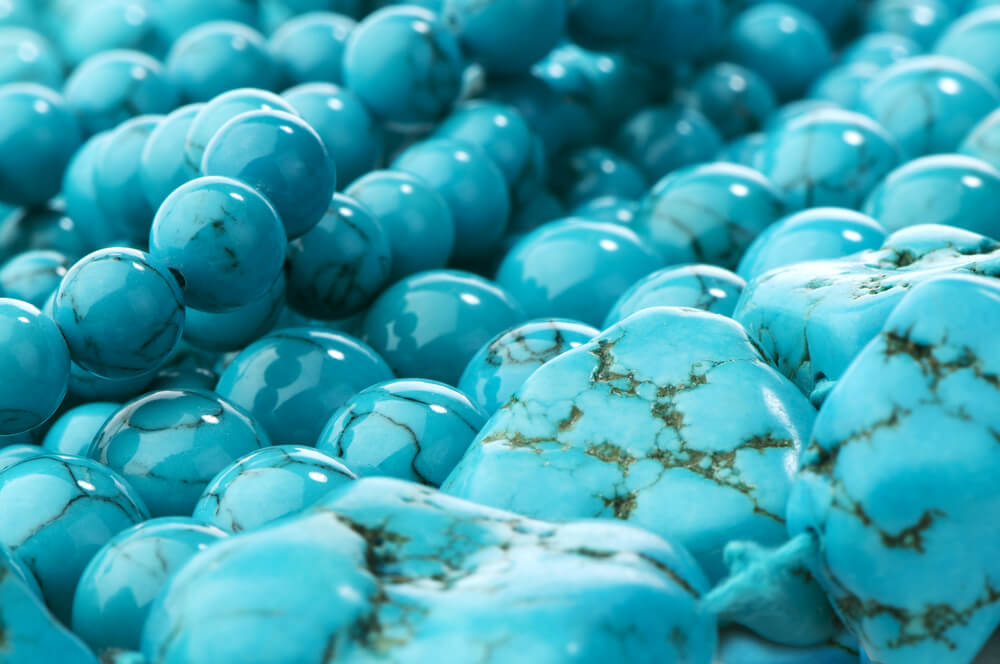
It often happens that we notice an alteration or even a change in the colour of turquoise in our jewellery. What is the cause of this phenomenon and how can we prevent it?
Where is the turquoise colour found in gemology?
The mineral turquoise is one of the most famous non-transparent minerals used in jewelry making. Its structure is – in the vast majority of cases – polycrystalline, meaning that it does not grow as a single crystal but as an aggregation of many tiny crystals of the same chemical composition. (Monocrystals of turquoise exist on earth but are not used in jewellery.)
One of the common characteristics of all polycrystalline materials is the slight differences in chemical element content, which leads to the variation in color seen in the material. Indeed, in the market, Turquoise minerals are found with various colorations ranging from intense blue to intense green, from very light to dark tone.
The natural evolution of the mineral turquoise
Often, the mineral Turquoise starts from a blue or intense blue-green color and after continuous use or simply after years of exposure to environmental factors (sun, humidity, etc.) its original color is altered and usually gradually turns green. This gradual change in the colour of Turquoise is natural and in no way means that Turquoise has ‘gone bad’ or that something tragic has happened to it or that it is losing its value. It is a type of oxidation caused by the chemical reaction of some of the components of Turquoise with agents from the environment and it is an irreversible phenomenon.
What can we do to prevent it?
As mentioned above, this change in the color of the mineral Turquoise is a natural phenomenon, meaning that it occurs to some degree in all Turquoise minerals. How quickly it happens depends on the structure and chemistry of each sample and the use we make of it.
So if we want to delay such a change, what we need to do is to take care of our Turquoise. We must avoid contact of chemicals and acidic products with our Turquoise as this will hasten the deterioration of the colour. We should wear our Turquoise after we have applied our perfume, lotion or cream and after they have been absorbed and dried. If the Turquoise comes into contact with bare skin, it is recommended that the mineral be wiped off with a soft cloth after removing it, as human sweat is acidic and can alter the colour of all porous materials if absorbed by them.
The beauty of minerals lies in their diversity and the incredible variety of colours they offer us. We just have to take care of them as any of our precious objects should be! Find your own turquoise in gold jewelry from Mil-Or’s unique collection.
Eva Kountouraki GG, AJP, JBM | Gemology Instructor, Jewellery Consultant


